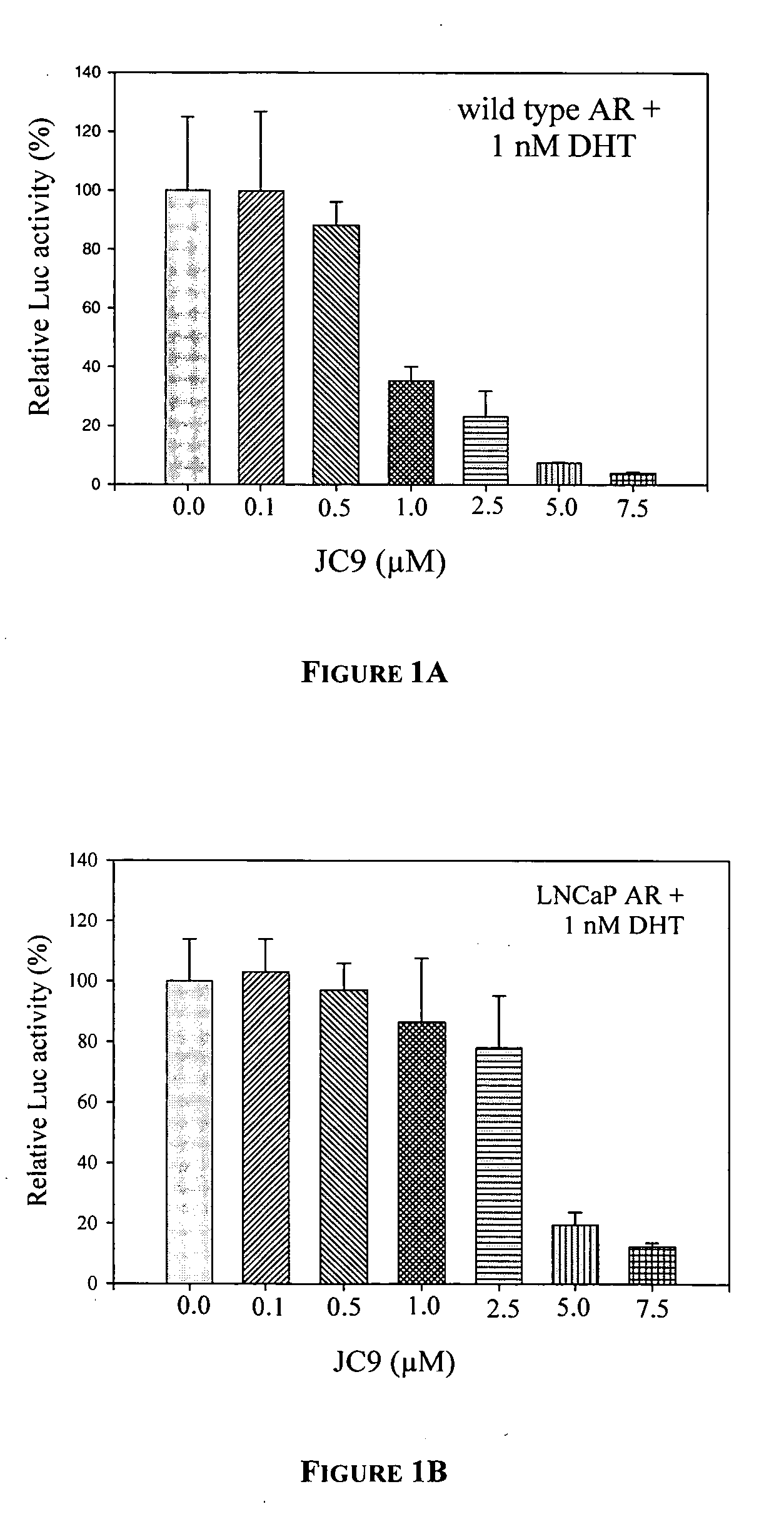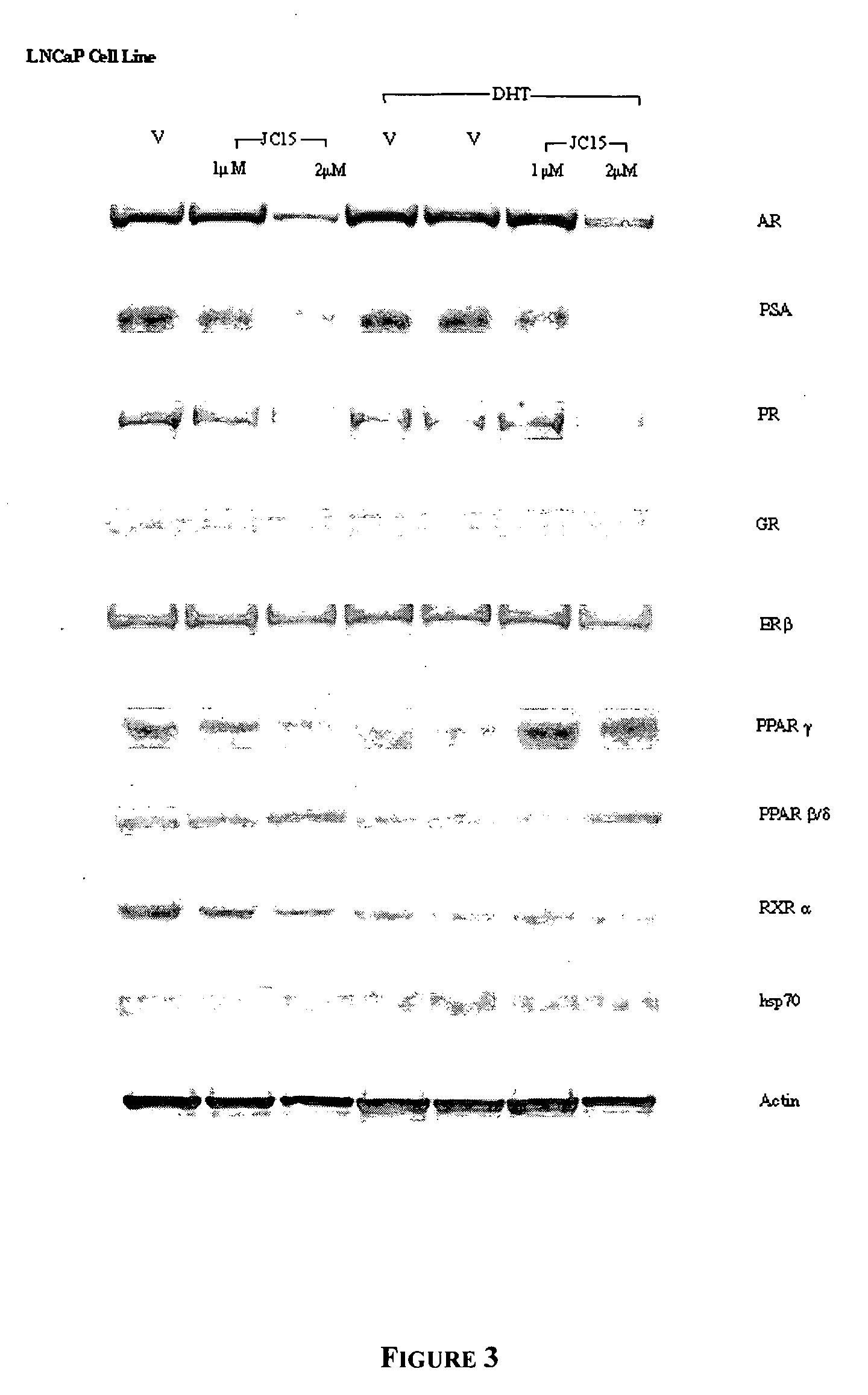Methods and compositions for enhancing degradation of nuclear receptor transcription factors and uses thereof
- Summary
- Abstract
- Description
- Claims
- Application Information
AI Technical Summary
Benefits of technology
Problems solved by technology
Method used
Image
Examples
example 1
Overview of Enhancing Degradation of a Transcription Factor
[0068] The following examples describe non-limiting embodiments of a method of enhancing degradation of a nuclear receptor. Any mechanism that enhances degradation of the nuclear receptor of interest can be used, including, but not limited to, interfering with translocation of the nuclear receptor into the nucleus or retaining the nuclear receptor in the cytoplasm of a cell, exposing a motif within the nuclear receptor able to induce protease activity, increasing activity of a protease capable of specifically degrading the nuclear receptor, inhibiting the stabilization of a nuclear receptor, reducing the solubility of the nuclear receptor, activating a pathway able to degrade the nuclear receptor, increasing ubiquination of the nuclear receptor, increasing phosphorylation of the nuclear receptor by an appropriate kinase, inducing apoptosis, or reducing an interaction between a nuclear receptor and a cofactor able to stabili...
example 2
Enhancing Degradation of a Nuclear Receptor
[0072] This describes a non-limiting example of methods and assays useful in studying the downstream effects of degradation of a nuclear receptor. In this particular example, a compound known to enhance degradation of the nuclear receptor, androgen receptor (AR), was examined for its effects on AR activity and on cell proliferation. One of the major tasks in cancer management is to control or slow tumor proliferation. AR plays a significant role in stimulating prostate cancer cell proliferation, and thus, modulation of AR activity by AR degradation could serve as a useful means to delay or control prostate cancer progression.
Androgen Receptor Transactivation Assay
[0073] Prostate cancer cells, non-prostate tumor cells, and normal cells can be used in this transient transfection assay, which measures transactivation of the androgen receptor (AR) and can be used to detect a reduction of AR activity caused by AR degradation. In the provided...
example 3
Specificity of Steroid Hormone Receptor Degradation in Different Cell Lines
[0081] This describes a non-limiting example of specific degradation of nuclear receptors (in this case, steroid hormone receptors) in various cell lines. Two representative tumor cell lines were used to test the effects of the compound JC15 on the androgen receptor: the human prostate cancer cell line, LNCaP, and the human mammary adenocarcinoma cell line, T47D
[0082] Human prostate cancer LNCaP cells and T47D cells were plated at a density of 7×105 cells per 60 millimeter tissue culture dish in Richter's Improved MEM Insulin (RPMI) medium containing 10% FBS. The medium was changed to RPMI or DME medium containing 10% charcoal-stripped serum 24 hours later to deplete cellular androgens or estrogens. After another 24 hours, treatment with the test compounds began. The test dose of JC15 was 1 or 2 micromolar and the test does of JC9 was 1, 5 and 10 micromolar. LNCap cells also received dihydrotestosterone (DH...
PUM
| Property | Measurement | Unit |
|---|---|---|
| Molar density | aaaaa | aaaaa |
| Composition | aaaaa | aaaaa |
| Immunogenicity | aaaaa | aaaaa |
Abstract
Description
Claims
Application Information
 Login to View More
Login to View More - R&D
- Intellectual Property
- Life Sciences
- Materials
- Tech Scout
- Unparalleled Data Quality
- Higher Quality Content
- 60% Fewer Hallucinations
Browse by: Latest US Patents, China's latest patents, Technical Efficacy Thesaurus, Application Domain, Technology Topic, Popular Technical Reports.
© 2025 PatSnap. All rights reserved.Legal|Privacy policy|Modern Slavery Act Transparency Statement|Sitemap|About US| Contact US: help@patsnap.com



